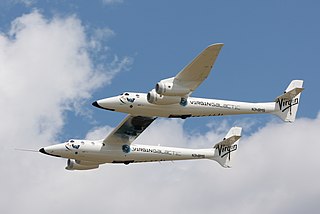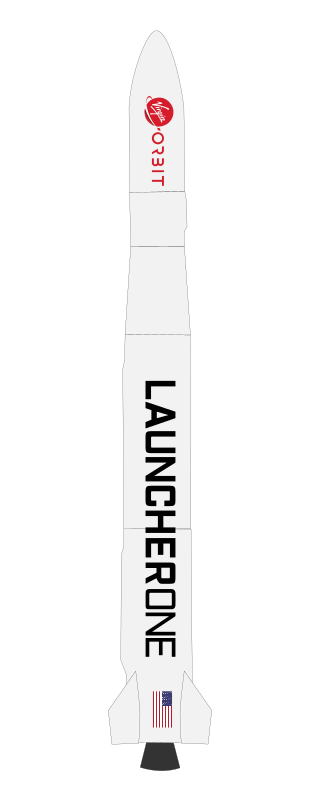Human spaceflight programs have been conducted, started, or planned by multiple countries and companies. Until the 21st century, human spaceflight programs were sponsored exclusively by governments, through either the military or civilian space agencies. With the launch of the privately funded SpaceShipOne in 2004, a new category of human spaceflight programs – commercial human spaceflight – arrived. By the end of 2022, three countries and one private company (SpaceX) had successfully launched humans to Earth orbit, and two private companies had launched humans on a suborbital trajectory.

The Shuttle Carrier Aircraft (SCA) are two retired extensively modified Boeing 747 airliners that NASA used to transport Space Shuttle orbiters. One (N905NA) is a 747-100 model, while the other (N911NA) is a short-range 747-100SR.

Frederick Wilford "Rick" Sturckow is an engineer, retired United States Marine Corps officer, former NASA astronaut, and commercial spacecraft pilot. Sturckow is a veteran of four Space Shuttle missions. He flew on STS-88 and STS-105 as a pilot and STS-117 and STS-128 as a commander. All four missions docked with the International Space Station, making Sturckow one of three American astronauts to visit the station four times. Sturckow later was assigned to the Johnson Space Center as a CAPCOM. He left NASA in 2013 to become a pilot for Virgin Galactic.

The Mojave Air and Space Port at Rutan Field is in Mojave, California, United States, at an elevation of 2,801 feet (854 m). It is the first facility to be licensed in the United States for horizontal launches of reusable spacecraft, being certified as a spaceport by the Federal Aviation Administration on June 17, 2004. The facility covers 2,998 acres and has three runways.

Virgin Galactic Holdings, Inc. is a British-American spaceflight company founded by Richard Branson and the Virgin Group conglomerate which retains an 11.9% stake through Virgin Investments Limited. It is headquartered in California, and operates from New Mexico. The company is developing commercial spacecraft and aims to provide suborbital spaceflights to space tourists. Virgin Galactic's suborbital spacecraft are air launched from beneath a carrier airplane known as White Knight Two. Virgin Galactic's maiden spaceflight occurred in 2018 with its VSS Unity spaceship. Branson had originally hoped to see a maiden spaceflight by 2010, but the date was delayed for several years, and then delayed again, primarily due to the October 2014 crash of VSS Enterprise.

Air launching is the practice of releasing a rocket, missile, parasite aircraft or other aircraft payload from a mother ship or launch aircraft. The payload craft or missile is often tucked under the wing of the larger mother ship and then "dropped" while in flight. It may also be stored within a bomb bay, beneath the main fuselage or even on the back of the carrier aircraft, as in the case of the D-21 drone. Air launching provides several advantages over ground launching, giving the smaller craft an altitude and range boost, while saving it the weight of the fuel and equipment needed to take off on its own.

VSS Enterprise was the first SpaceShipTwo (SS2) spaceplane, built by Scaled Composites for Virgin Galactic. As of 2004, it was planned to be the first of five commercial suborbital SS2 spacecraft planned by Virgin Galactic. It was also the first ship of the Scaled Composites Model 339 SpaceShipTwo class, based on upscaling the design of record-breaking SpaceShipOne.

The Scaled Composites Model 339 SpaceShipTwo (SS2) is an air-launched suborbital spaceplane type designed for space tourism. It is manufactured by The Spaceship Company, a California-based company owned by Virgin Galactic.

The Scaled Composites Model 348 White Knight Two (WK2) is a quadjet cargo aircraft that is used to lift the SpaceShipTwo spacecraft to release altitude. It was developed by Scaled Composites from 2007 to 2010 as the first stage of Tier 1b, a two-stage to suborbital-space crewed launch system. WK2 is based on the successful mothership to SpaceShipOne, White Knight, which itself is based on Proteus.

The Spaceship Company (TSC) is a British/American spacecraft manufacturing company that was founded by Burt Rutan and Richard Branson in mid-2005 and was jointly owned by Virgin Group (70%) and Scaled Composites (30%) until 2012 when Virgin Galactic became the sole owner. TSC was formed to own the technology created by Scaled for Virgin Galactic's Virgin SpaceShip program. This includes developments on the care-free reentry system and cantilevered-hybrid rocket motor, licensed from Paul Allen and Burt Rutan's Mojave Aerospace. The company is manufacturing Virgin Galactic's spacecraft and will sell spacecraft to other buyers. The suborbital launch system offered will include the SpaceShipTwo spacecraft and the White Knight Two carrier aircraft.

VSSUnity, previously referred to as VSS Voyager, is a SpaceShipTwo-class suborbital rocket-powered crewed spaceplane. It is the second SpaceShipTwo to be built and is part of the Virgin Galactic fleet. It first reached space as defined by the United States on 13 December 2018, on the VP-03 mission.

LauncherOne was a two-stage orbital launch vehicle developed and flown by Virgin Orbit that had operational flights from 2021 to 2023, after being in development from 2007 to 2020. It was an air-launched rocket, designed to carry smallsat payloads of up to 300 kg (660 lb) into Sun-synchronous orbit (SSO), following air launch from a carrier aircraft at high altitude. The rocket was carried to the upper atmosphere on a modified Boeing 747-400, named Cosmic Girl, and released over ocean. Initial work on the program was done by Virgin Galactic, another Virgin Group subsidiary, before a separate entity — Virgin Orbit — was formed in 2017 to complete development and operate the launch service provider business separately from the passenger-carrying Virgin Galactic business.

David William Donald Mackay is the Chief Pilot of Virgin Galactic, a commercial astronaut and a former RAF test pilot. He is the first native-born Scot to visit space.

Michael Tyner Alsbury was an American test pilot for Scaled Composites. He died on October 31, 2014, during test flight PF04 of the Virgin Galactic SpaceShipTwo VSS Enterprise.

VP-03 was a sub-orbital spaceflight of the SpaceShipTwo-class VSS Unity which took place on 13 December 2018, piloted by Mark P. Stucky and co-piloted by Frederick W. "CJ" Sturckow.

Mark P. "Forger" Stucky is an American test pilot and commercial astronaut. In these roles, he was an employee of Virgin Galactic, a private spaceflight company which is developing sub-orbital space tourism flights.
Michael Masucci is a test pilot for Virgin Galactic and a commercial astronaut. He is a former U.S. Air Force lieutenant colonel and U2 test pilot. Masucci first flew to space in February 2019, during the VSS Unity VF-01 mission, and again in July 2021, onboard Virgin Galactic Unity 22. He flew to space again onboard Unity 25, on May 9, 2023. Total time in space: 1 hour 35 minutes and 04 seconds












